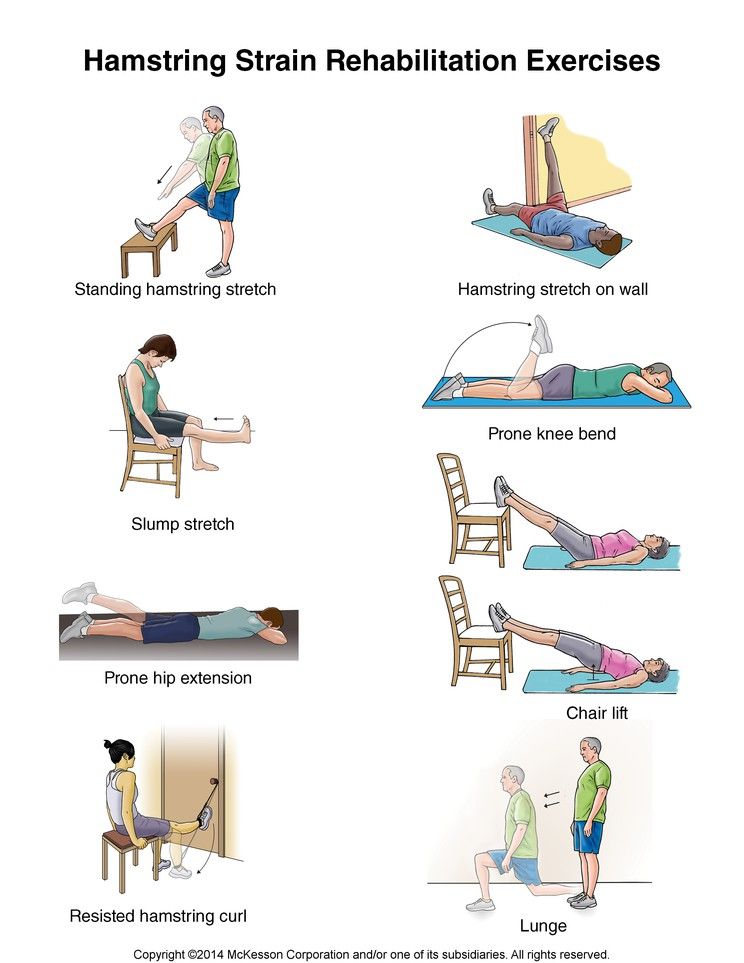Hamstring injuries are a common issue faced by athletes and individuals who engage in physical activities, particularly those that involve running, jumping, and sudden stops. The hamstring muscles, which include the biceps femoris, semitendinosus, and semimembranosus, play a crucial role in knee flexion and hip extension. When these muscles are strained or torn, it can lead to significant pain, limited mobility, and a prolonged recovery period. However, with a well-structured rehabilitation program that includes targeted exercises, individuals can effectively recover from hamstring injuries and reduce the risk of future occurrences.
Understanding Hamstring Injuries
Before diving into the exercises, it’s essential to understand the nature of hamstring injuries. These injuries are typically classified into three grades: - Grade 1: Mild strain with minimal pain and minimal loss of strength and function. - Grade 2: Moderate strain with significant pain and noticeable loss of strength and function. - Grade 3: Severe strain or complete tear of the muscle, which can require surgical intervention.
Initial Recovery Phase
In the initial phase following a hamstring injury, the primary focus should be on reducing pain and inflammation, promoting healing, and maintaining as much strength and flexibility as possible. This can be achieved through:
Rest, Ice, Compression, and Elevation (RICE)
- Rest: Avoid activities that aggravate the injury.
- Ice: Apply ice for 15-20 minutes, several times a day.
- Compression: Use a bandage or compression wrap to reduce swelling.
- Elevation: Elevate the affected leg above heart level to reduce swelling.
Pain-Free Stretching
Once the acute pain has subsided, gentle stretching can be introduced to maintain flexibility. Examples include:
- Standing Hamstring Stretch: Stand with your feet shoulder-width apart, then bend forward at the hips. Keep your knees straight and hold for 15-30 seconds.
- Seated Hamstring Stretch: Sit on the floor with your affected leg straight out in front of you. Lean forward, reaching for your toes, and hold for 15-30 seconds.
Strengthening Exercises
As the injury heals and pain decreases, strengthening exercises become crucial for restoring function and preventing future injuries. These should be introduced gradually and only when there is no significant pain.
Isometric Exercises
These exercises contract the muscle without moving the joint and are excellent for initial strengthening:
- Hamstring Contractions: Sit on the floor with your legs straight out. Contract your hamstrings (the back of your thigh) without moving your legs. Hold for 5-10 seconds, repeat 10-15 times.
- Wall Sits: Stand with your back against the wall and your feet shoulder-width apart. Slowly slide your back down the wall until your thighs are parallel to the ground. Hold for 30 seconds, rest for 30 seconds, and repeat.
Resistance Band Exercises
As strength improves, resistance bands can be used to add variety and challenge to the workout:
- Banded Hamstring Curls: Anchor a resistance band at ankle level. Loop the other end around the ankle of the affected leg. Curl your heel toward your buttocks against the resistance, then slowly return to the starting position. Perform 3 sets of 10-12 repetitions.
Advanced Strengthening
Once a good level of strength and flexibility has been achieved, more advanced exercises can be introduced:
- Deadlifts: This compound exercise works multiple muscle groups, including the hamstrings. Start with lighter weights and focus on proper form.
- Leg Press: Using a leg press machine allows for hamstring strengthening in a controlled environment. Focus on the eccentric phase (lengthening of the muscle) to mimic the action of the hamstrings.
Plyometric and Agility Training
For athletes looking to return to high-level activities, incorporating plyometric exercises (such as jump squats and box jumps) and agility drills (like zig-zag running and shuttle runs) can help improve power and speed. However, these should only be introduced once there is full strength and no pain, and under the guidance of a professional trainer or physical therapist.
Prevention Strategies
Preventing hamstring injuries involves a combination of flexibility exercises, strengthening programs, and proper training techniques. Incorporating regular stretching, especially after workouts, and ensuring that the hamstrings are strong can significantly reduce the risk of injury. Additionally, avoiding overtraining, incorporating rest days, and warming up properly before activities are crucial.
Conclusion
Recovering from a hamstring injury requires patience, dedication, and a well-structured rehabilitation plan. By understanding the injury, following a gradual progression from rest and ice to stretching and strengthening, and finally incorporating advanced exercises, individuals can not only recover but also strengthen their hamstrings to prevent future injuries. It’s essential to work with healthcare professionals, such as physical therapists, to tailor the rehabilitation program to the individual’s specific needs and goals.
How long does it take to recover from a hamstring injury?
+Recovery time from a hamstring injury can vary significantly depending on the severity of the injury. Mild strains may heal within a few weeks, while more severe tears can take several months to a year or more to fully recover.
Can I prevent hamstring injuries?
+Yes, while not all injuries can be prevented, incorporating exercises that strengthen the hamstrings, maintaining flexibility, ensuring proper warm-up routines, and avoiding overtraining can significantly reduce the risk of hamstring injuries.
What are the first signs of a hamstring injury?
+The first signs of a hamstring injury often include sudden pain in the back of the thigh, swelling, bruising, and difficulty walking or straightening the leg. In severe cases, a popping or snapping sensation may be felt at the time of injury.


